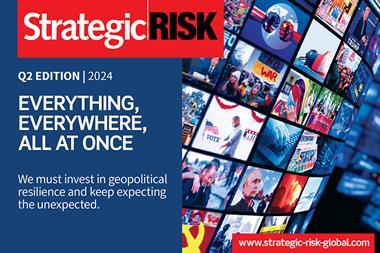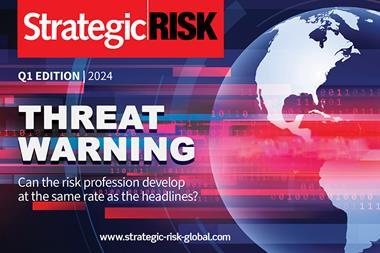Can you show insurers that you’re up-to-speed with how your operations are responding to new market pressures?
The current risk landscape is very different from anything that existed pre-pandemic, causing apprehension amongst underwriters. And, understandably, working in an uncertain environment, they become less flexible, sometimes even refusing to contemplate previously acceptable risks.
Consider what’s changed within your business over the last year. Can you convince and demonstrate to insurers that you’re up to speed with how your operations are responding to new market pressures?
To navigate successfully through this hard market, you’ll need to evidence that you’ve accurately presented the risk and that the right audited control measures, proactively minimising potential loss, damage or injury, are securely in place.
Remote working
COVID-19 has forced the commercial world to adapt to new, remote ways of working, and this has put digital developments at the forefront of every business, as online replaces in-person transactions.
Today, some business descriptions no longer fit what the company does or will be doing in the future, and this has implications on professional indemnity, employer’s liability and cyber risk cover.
It’s worth considering how the business is classified and whether you can demonstrate any significant changes to your structure, people, customers and the supply chain.
There’s an increased focus on the risks associated with staff and remote working. Without the right digital protocols in place, many businesses are vulnerable, particularly where colleagues access central business systems from various locations.
Cyber scams
UK companies lost over £6.2 million to cyber scams in 2020 – with a 31% increase in cases during the first escalation of the pandemic (May-June).
Cyber attacks are a critical concern in this new digital, web-based economy, and specialist cybersecurity credentials will not only help reduce the likelihood of a cyber attack, they’ll also improve your cyber risk profile.
Then there is the risk of fraud or malicious damage by disengaged and disenchanted employees.
Can you evidence to your broker, underwriter, insurer and executive board that any changes for your colleagues – from the shop floor to the office suites – are recognised from both employer’s liability and sustainability perspectives?
Supply chain
Things like weather-related events have always had the potential to impact the supply chain, leading to supply issues. We’re seeing this now, with the pandemic causing microchip shortages and increasing the lead time for parts within the motor manufacturing industry.
As a result of new ways of working, we’re also seeing increases in cost and labour, which may perpetuate. It’s likely that things will never return to the way they were pre-pandemic in any sector, and this all needs to be factored into your business interruption (BI) maximum indemnity period calculation.
Do you have the right contracts in place with your key suppliers, and where do you rank in order of preference?
Confirmation to insurers that your limits are realistic in relation to suppliers, customers and extensions, and evidencing that your contracts include customer/supplier agreements, will go a long way to improving your risk presentation and shows a hands-on and engaged approach.
If you haven’t had a BI insurance review recently, now is probably the perfect time.
Accurate declarations
Over 80% of the reinstatement cost assessments that we undertake are underinsured to some degree, and it’s not unusual to recommend a day one value more than twice the current sum insured.
Do you have information that validates, on a contemporary basis, the reinstatement costs of all buildings, stock, plant, machinery, business interruption covers and extensions, as well as the impact of the pandemic and/or Brexit on turnover?
Care is needed on declaration linked policies, where the basis of estimated gross profit reflects your expected turnover in the subsequent 12-, 24- or 36-month maximum indemnity period.
In current market conditions, the up-to-date sums insured and limits must reflect reality rather than a best guess. It might seem obvious, but a detailed asset register that recognises every aspect of the reinstatement cost for each item, together with reports from credible external experts, will provide reassurance that the risk is well presented.
Risk surveys
Having an effective health and safety team, together with recognition of any new risks and your solutions to them, will undoubtedly relax the hard market a little.
Independent assessments offer certainty that your processes have been double-checked and fall in line with statutory requirements.
Other options
Due to loss experiences worldwide, we’ve seen the retreat of some significant global and high street insurers from certain sectors.
Of course, there are other options – alternative risk transfer or perhaps a captive fronted programme can provide the answer. Self-insured retentions are also worth considering, as increased levels of deductibles across all classes of your programme will help in a hard market.
You can also consider purchasing buy-down deductible insurance, which provides a comfort blanket that will no doubt keep board members happy.
Belts and braces
Essentially, what’s needed is a ‘belts and braces’ approach. Presenting the risk, supported by independent assessments from recognised insurance professionals, will undoubtedly help secure the right cover under the best terms.
With front line claims-handling experience, claims management companies have a unique insight into what can happen in best and worst-case scenarios and across a wide range of business sectors.
We also know where underinsurance typically occurs and how false economies at the point of renewal can impact a business in the event of a loss. And beyond claims experience, we monitor the trends and predictions that will affect claims costs in the future.
If you need risk management and pre-loss guidance, you’d be well advised to talk to a team of insurance claims specialists who have the experience to make a positive difference to your business.
Paul McLarnon is corporate development director of Sedgwick International UK




















No comments yet